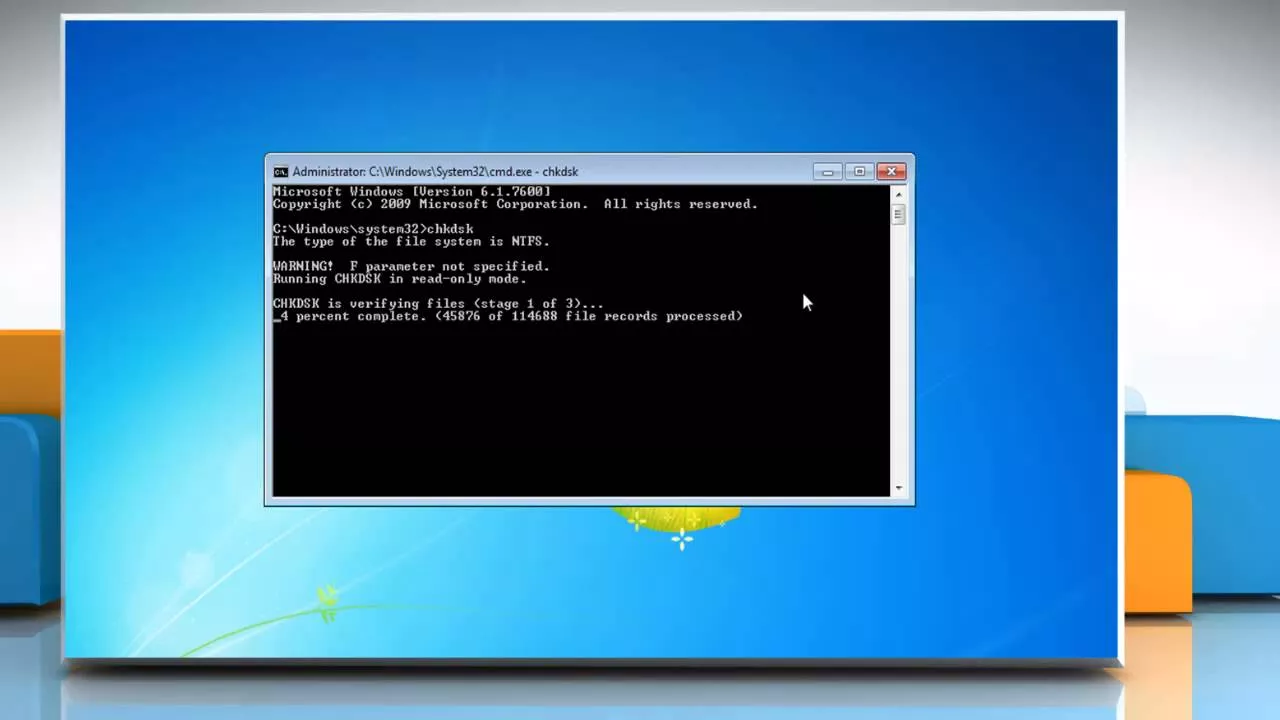Chkdsk is one of these very small tools built into almost every version of Windows that helps to fix NTFS file system errors, file system metadata corruption, or hard disk errors.

Before Windows Vista and Windows 7, chkdsk had not changed much at all. Some major speed improvements were made in Windows Vista and 7 to allow chkdsk to run faster, but chkdsk still depended on the number of files stored in volume.
Chkdsk Online Guide for Windows 10 Practical Tips
Because of this inherent design, it may take several hours for Chkdsk to finish scanning a large, multi-file device.
Fortunately for Windows 8 and Windows 10, chkdsk has been completely updated. What’s even better is that there are several additional features added to Windows 8/10 to capture and repair the file system errors, so you never have to restart chkdsk.
In this article, I will tell you about chkdsk changes in Windows 8/10 and the added additional file system health tools. With Windows 8/10, many errors will be automatically corrected while running Windows, which needed chkdsk to work after restarting.
Windows 10 – Chkdsk and the filesystem health
First, I immediately noticed the number of new options included in chkdsk on Windows 10, unlike Windows 7. Here is a screenshot of the list of chkdsk options in Windows 7:
Here is the list of chkdsk parameters in Windows 10:
As you can see after A / B, there are about 8 new parameters. I’ll look at these things in more detail in a little while. First, let’s take a closer look at how the new healthcare system works in Windows 8/10.
For starters, you probably remember how a device is labeled as healthy or not (dirty). This is no longer the case. There are now a whole set of file system health stages or states:

Let’s go through these. First it is healthy, it only means: the system is healthy and there are no problems. Then there is something called Online Self-medication that is not shown as a step but appears between Healthy and On-site Verification.
Online Self-Treatment is a feature of NTFS introduced in Windows Vista that allows the file system to lock in until is still online (which means Windows can still work). In Windows 8/10, the number of self-healing problems has increased.
Corruption should be checked after self-medication. This is because some corruption is memory related and not actually disk related.
To find this out, Windows 8/10 added a new service called On-site Verification Services , the service is only activated by the file system, and it will check whether corruption is actually a disk or not. If so, go to the next step: Online scanning required.
Windows 8/10 has built-in maintenance tasks that work every day. Windows will check these corruptions and register them for later correction. Again, all this is done while the system is online.
The next step is Finding a Place , This is where chkdsk in Windows 8/10 is completely different. Spot Fix is a new parameter that checks the disc and eliminates all problems in just a few seconds.
The time it takes to run chkdsk using the safe is based on the number of corruptions instead of the number of files, as in older versions of Windows. This means that everything is fixed in seconds. Here is a graph that shows the time used by chkdsk / f against the new chkdsk / spotfix.
As you can see, you can wait 6 hours using chkdsk the old way or 2 seconds to play it again in a new way! Great! Now, to be clear, the service section means you need to restart the system to fix the problem.
In Windows 8/10, there are two ways to manually execute chkdsk on your system. First, you can go to your computer, click on the device, and then click Properties .
Click Tools, and then click Verify.
Most errors can be corrected without restarting, but if a spot correction is required, you will be prompted to restart. Again, remember that it will only take seconds to determine though! Another way is the command line that you saw before. The new options are:
– / scan – performs an online scan, which will determine what can be corrected without restarting.
– / forceofflinefix – should be used with / scan and is basically the same thing as work / spotfix
– / efficiency for – You can make online scanning even faster by using this parameter. It will consume more resources and delay other tasks.
– / spotfix – The new magical placeholder for chkdsk, which fixes errors in seconds, not hours
– / offlinescanandfix – Offline scanning will start and repair
– / freeorphanedchains – This applies only to FAT / FAT32 and exFAT systems. This will free the orthodox cluster chains rather than restore them.
– / markclean – Will mark volume clean with no corruption detected.
When you run / spotfix or / offlinescanandfix on the current volume used, you will be asked to schedule a scan the next time you start the system.
You can check if the device is scheduled to be scanned by entering chkntfs c: or whatever volume you want to check.
Overall, the new chkdsk in Windows 8/10 has some major improvements, and the new file system health states make detecting, checking, and repairing file corruption quick.
